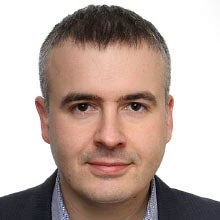Also available in Spanish and French

Spending a day at a kindergarten can be eye-opening for an adult. I’ll tell you why.
The school in question is what we, in the Russian Federation, call an inclusive school – where children with special needs are part of a regular kindergarten and participate in the same activities and programs as others. It works! This school was started in 2011 and does not distinguish between children with special needs and others. Both groups are part of the same class, sit at the same table, and participate in the same activities. Not many places in the world do this.
The inclusive model, while not unique, is still rare. But other than that distinctive nature, what’s so special about it?
It is part of a wider push in Russia to modernize and integrate kindergartens to be more cost and energy efficient, as the demand increases for these services.
The more prevalent type is a regular kindergarten – but even that, I would have been glad to attend as a child. It is bright, organized and new. This one even has a swimming pool! While the inclusive one stands out because of the idea that special children can participate in normal activities, the regular one is all about the architecture and design.
Parents here are active players, and are committed to their kids’ development. This is a good sign, because it is vital that they see the value in these new facilities, where tolerance and a multifaceted environment is supported and promoted.
Russia is building more of these new schools, and the effort couldn’t come any sooner. Currently, the country faces a big deficit in space and services for school-age children. But existing regulations are strict. Some prevent municipalities from innovations in construction and shackle them with outdated requirements.
To combat those hurdles, Russian policy makers are working with World Bank to draw up concrete proposals to enhance early childhood education, increase access to services and ensure the quality of those services. The result, we hope, will be a system that’s more flexible, child-centered and effective.
The trip to these schools in early June was part of an international seminar, “Ready, Steady, Go!: Inspiring Design of Learning Environments for Early Childhood Education and Care.”
Most of us at the seminar agreed on one thing – spaces for children should be open, transparent and spur creativity and movement. Social interaction does not require huge spaces, dozens of rooms and a planned schedule. It requires a free and secure environment, where children are encouraged to discover their interests.
As of 2011, only 61 percent of children in Russia were enrolled in kindergarten. In more developed countries, that number is closer to 90 percent. Russia is working to get there. Some regions are working to create universal systems for preschool age children. Yakutia is an example, where a $200 million investment will help to create a balanced kindergarten system. That includes constructing and reconstructing more than 90 kindergartens to make them modern and cost efficient. It will also help update the curriculum, train teachers and managers.
Moscow is working on the program “Education of the Capital,” where nearly 42,000 openings will be created in new kindergartens in five years. In 2012, Moscow city is planning to build 80 kindergartens.
But counting more success stories will come with more dialogue and work, and my hope is that our workshop was a step towards that goal.


Join the Conversation